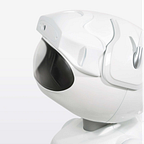Robots, Jobs, and Productivity: The Future of the Workplace
It took years before computers actually made work easier and more efficient — robots are at the beginning of that curve now.
Back in the ’80s, economists were struggling to understand why — despite all those amazing new personal computers — productivity was stagnant at best. Computers certainly seemed to be incredible efficiency machines, but there was nothing measurable to show for it.
The funny thing was, it just took a while. In the 1990s, productivity percentages in the IT industry began to rise. There are a lot of theories surrounding Solow’s productivity paradox, but one seems to stick: it took us a while to learn how to measure how computers helped us, because it took us a while to get used to what computers can do.
Nowadays, almost everything we do revolves around computers, from our work to how we communicate and shop. However, Solow’s productivity paradox just might be making a comeback. In spite of the promises of improved productivity and economic advances, people can’t seem to figure out what robots can do for them.
Let’s explore.
Robots in the Workforce
Allured by the promise of productivity and growth, more and more companies are experiencing a wave of robot-related optimism and investment. According to a 2017 International Federation of Robotics report, sales of robot technology increased in 2015 by roughly 15% from previous years. The federation also estimates that companies worldwide will employ 2.5 million industrial robots by 2019.
However, it’s not hard to find the opposite. There’s also a great deal of pessimism over the use of robots. Some experts predict that robots will eliminate up to 800 million jobs by 2030.
So, are robots a boon or a curse to the individual worker? And what about global productivity?
First things first. There’s starting to be a lot of evidence that, just as happened during the industrial revolution, people will adapt. Thanks to machines, workers have been moving away from jobs consisting of manual labor for over two centuries. And today, with robots, it continues.
NPR interviewed workers at a furniture company in Massachusetts where not only are workers and robots happily coexisting, the employees are learning how to program the robots and supervise them. And, better yet, the new robot workers have given this small business the means to survive, because they were having increasing problems finding humans who wanted to do the work.
If our past adaptations to machines and computers tell us anything, it’s that fear is not answer. Instead of refusing to accept that the world as we know is about to change, the smart idea is to adopt a collaborative mentality where humans and robots work side by side.
The Productivity Effect
Researchers are already looking into the impact of robotics on productivity levels, trying to figure out if more robots would, in fact, mean fewer jobs. According to the IFR, new technological advancements aren’t here to render some jobs obsolete. But, when robots replace manual labor, the overall productivity increases dramatically due to the high level of precision and quality.
It was the case for a finishing company from California that saw an increase in productivity by a factor of four after purchasing their first robot painter. And, they did that without firing any of their human workforce.
In fact, a study from the Centre for Economic Performance found that employing robots to perform certain tasks increased annual GDP growth by 0.37% and labor productivity by 0.36% between 1993 and 2007. The Reshoring Initiative also estimated that 250.000 jobs had been brought back to the U.S between 2010 and 2015 thanks to robotics and automation. Moreover, companies using robots are less likely to relocate or set up offshore contracts to begin with.
Looking Forward
No one is arguing that humans can do manual tasks better than robots. Unlike humans, robots can perform tedious jobs for hours or days on end, without the need for food, sleep, or breaks. And, they deliver the same results every time. People don’t have that level of precision, cannot work 24/7, and, yes, are objectively slower than machines.
Even so, robots won’t be taking over anytime soon. In fact, they’re more likely to become your new coworker than to replace you. People are still better at performing complex or delicate jobs, so most industries will employ both to increase the quality of their products and productivity. A McKinsey Global Institute report found that instead of completely disappearing, many jobs will simply involve new forms of cooperation between man and machine.
Not to mention the fact that robots are a long way from being appropriate in all industries and sectors. The McKinsey Institute notes robotics and automation won’t have much effect for the foreseeable future on jobs that involve social interactions, managing people, or applying expertise. Jobs that have a high level of unpredictability also won’t see much automation anytime soon.
A Final Thought
Robots really are not likely to take all our jobs, just as the industrial revolution didn’t replace all craftspeople. Robots are, however, very likely to boost labor productivity levels. Companies that adopt robots can deliver high-quality products using fewer resources. That translates into economic gain and GDP growth that everyone can benefit from. And, finally, it might turn out that many manual labor positions aren’t going to be lost to robots, after all. Converting physically exhausting jobs into jobs supervising robots just might be a good thing for workers and companies alike.
